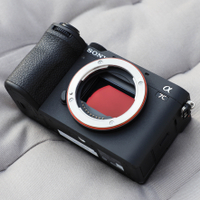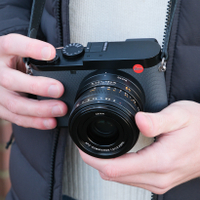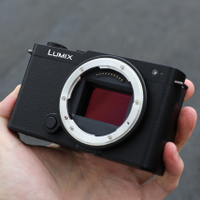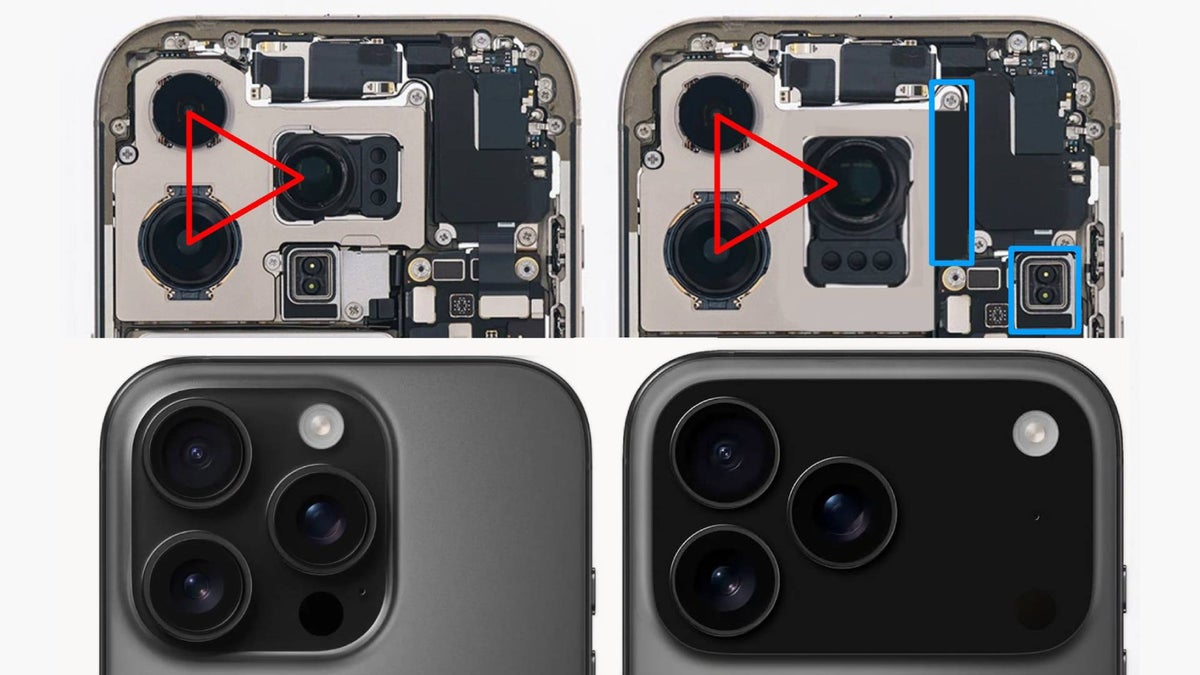The best travel camera: compact and portable cameras to take anywhere
The best travel cameras are small, lightweight, easy to use, and offer a range of features – I think these are the top choices you can buy today

For work or leisure – I travel a lot, and I will rarely be found without a camera in my hand. To be my top traveling companion, the best travel camera needs to combine compactness with image quality, advanced features with simple operation, and ideally – the ability to share my holiday photos and vacation videos quickly.
The best travel cameras have to do one crucial thing – be better than your phone. Even though the best camera phones can produce great images, you just don't get the same quality as you would if shooting with one of the best point-and-shoots or best mirrorless cameras. Smartphones are restricted by smaller sensors offering lower still and video quality, reduced low light performance, and minimal control over depth of field (for those blurry backgrounds).
In this guide, I'll look at mirrorless cameras that offer the best image quality and more versatility than compact systems, but at the cost of increased size and weight. Compact cameras, perfect for keeping on you at all times, won't weigh you down, and are simple to use – although fixed lenses limit their versatility. And finally, action cameras that are robust cameras made for wild adventures!

Gareth is the Reviews Editor at Digital Camera World, and the person in charge of approving all the latest camera-related tech. He never misses an opportunity to travel, or an excuse to take photos while traveling, so is best placed to judge what are the best travel cameras for all sorts of different vacations and adventures.
The Quick List
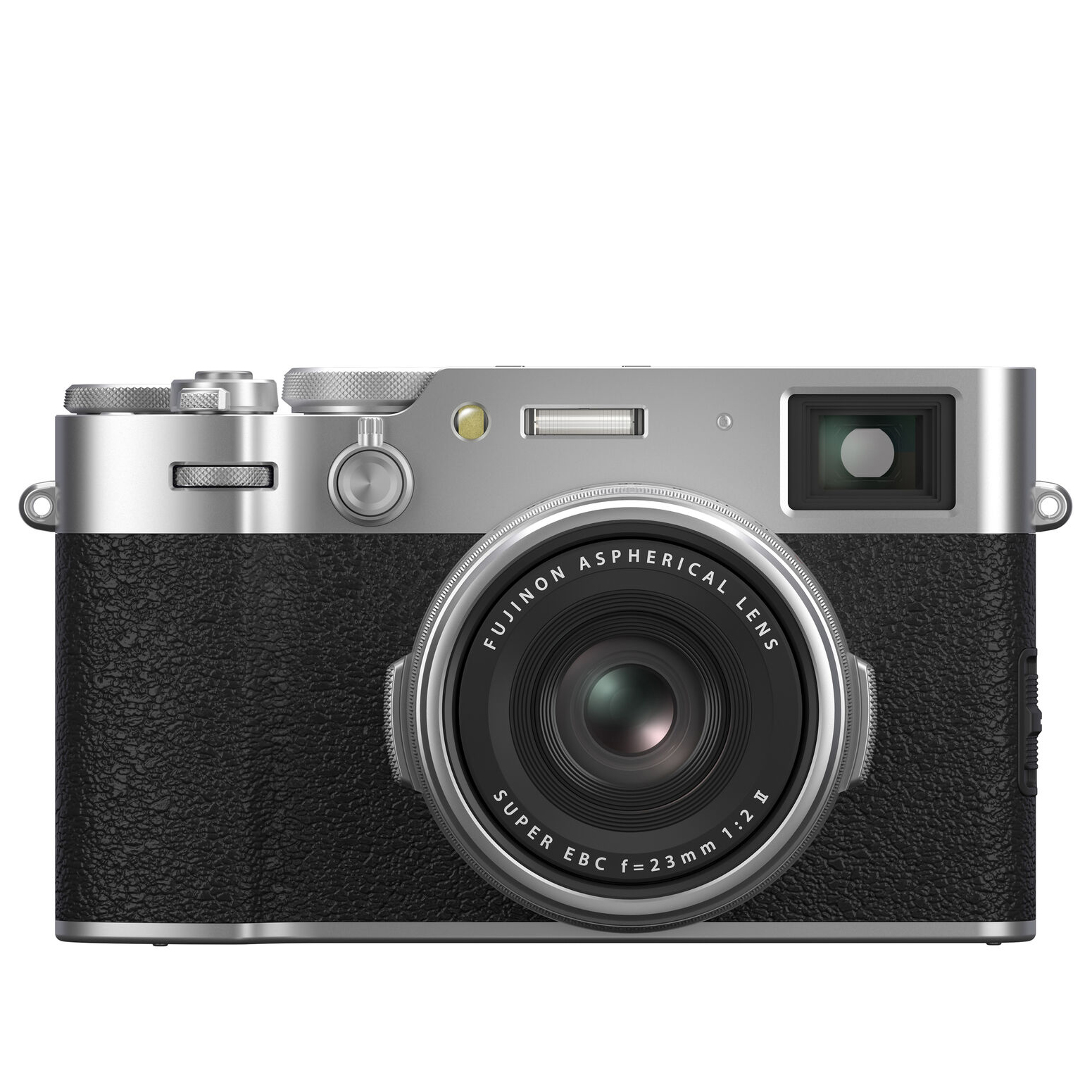
Travel cameras should be small, light, and feature-packed. The Fujifilm X100VI ticks all of those boxes, with a diminutive size, but 40MP images and 6.2K video. And does all this while looking great, with some stunning retro charm. Although the fixed lens will be limiting to some.
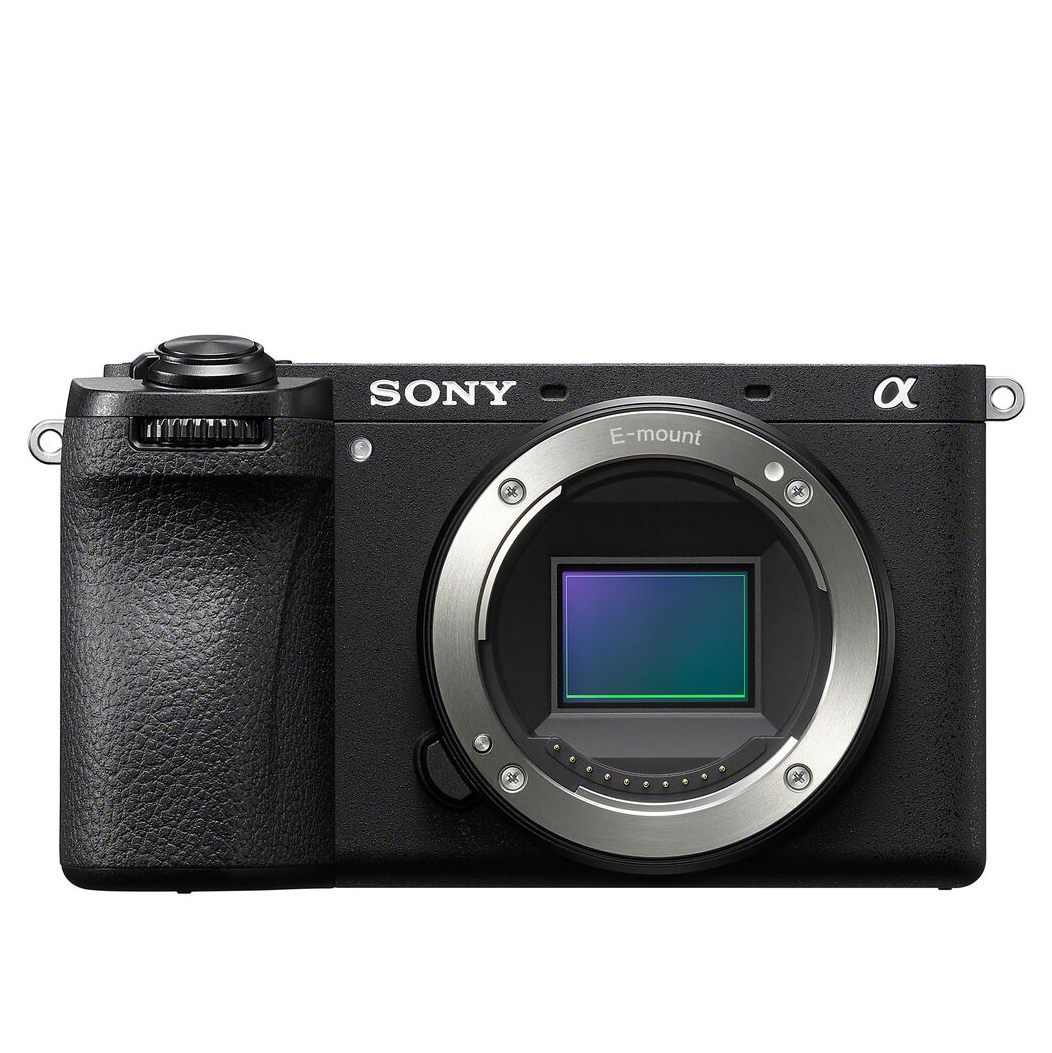
Don't let its compact size fool you, the Sony a6700 is a pocket powerhouse. Best of all, you can use any of the huge selection of E-mount lenses to make this a versatile pick for everything from city breaks to safaris, although big lenses do throw the off the balance of the small body.
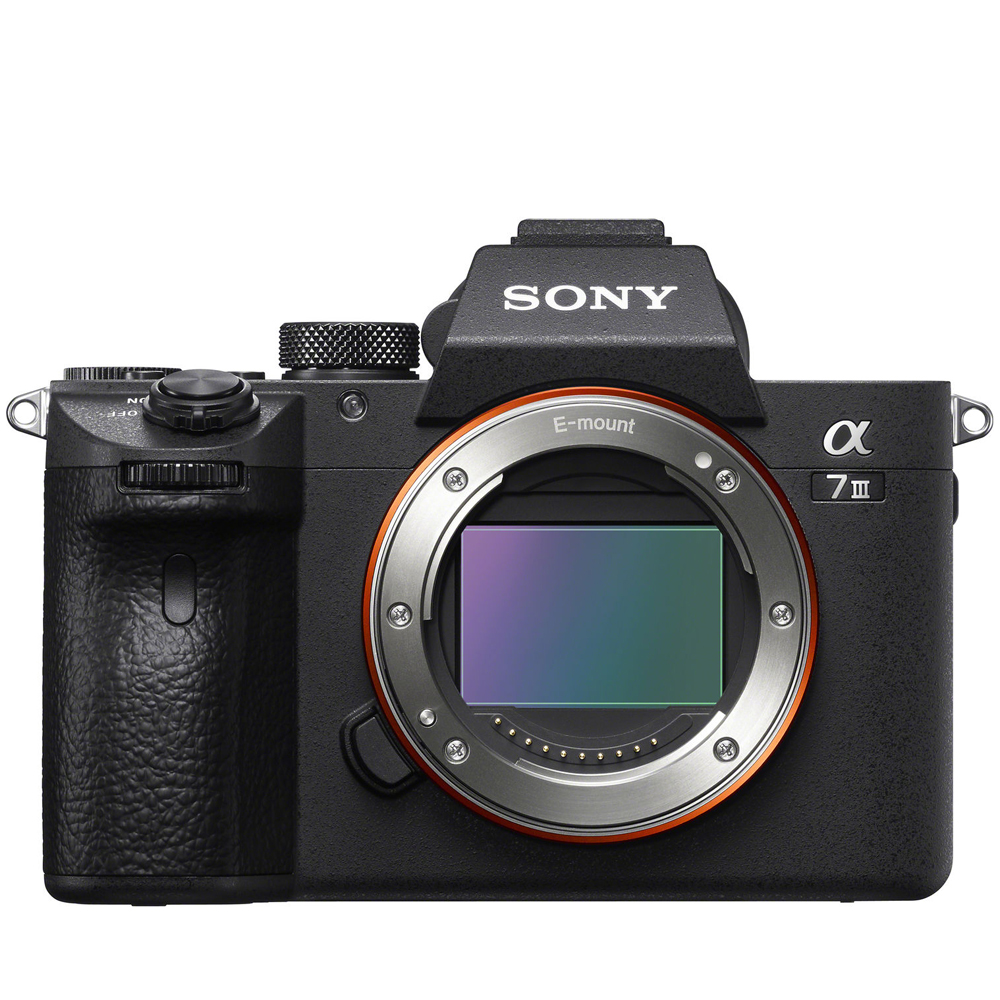
Despite aging a little, the Sony A7 III still offers some features that are competitive with new models like IBIS, auto-tracking, and 4K video. Best of all, the camera is incredibly well-priced, making it the best option for traveling with a pro camera without worrying too much about damaging expensive kit.
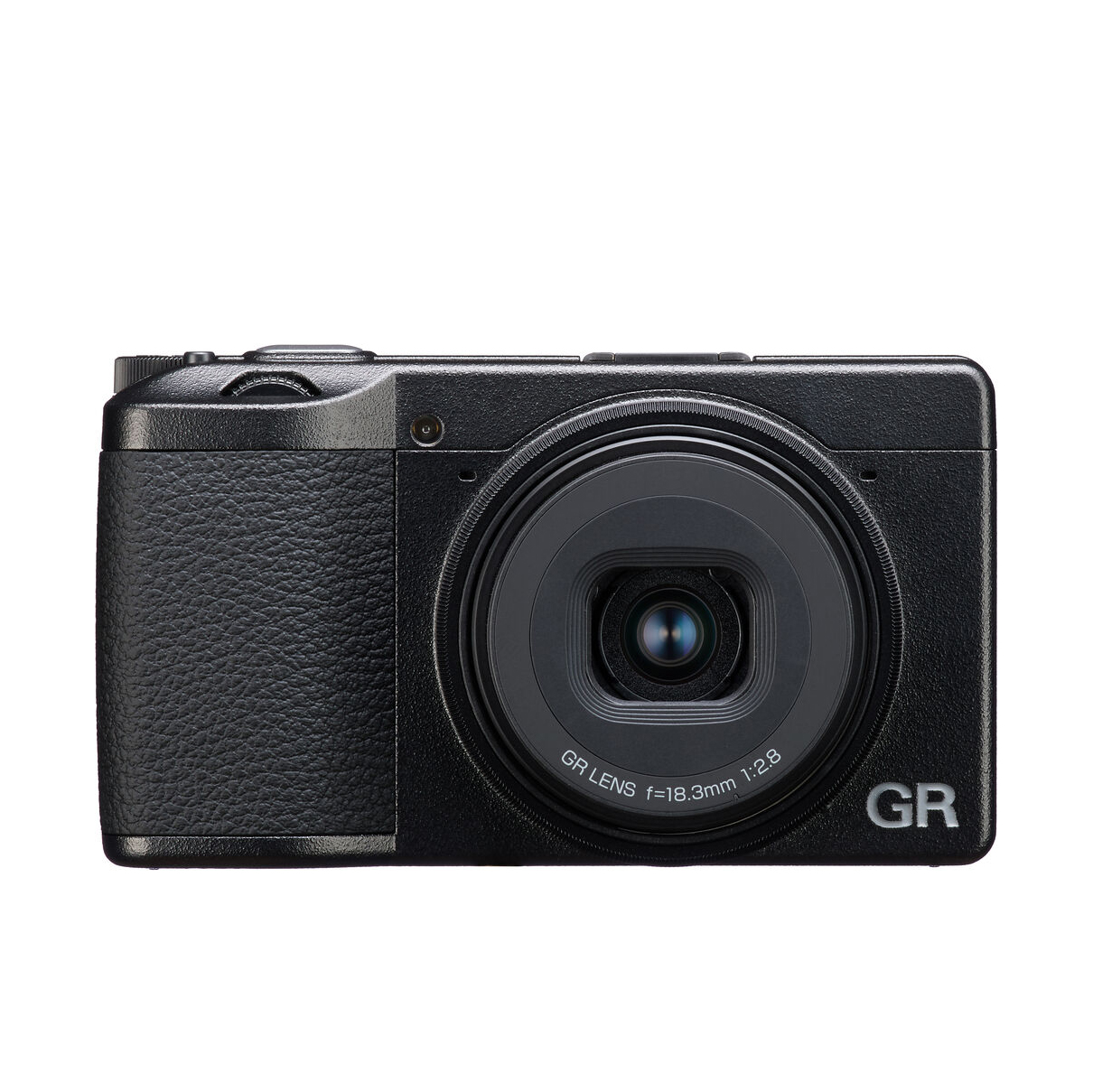
This is a compact point-and-shoot like no other, with its impressibly compact size hiding the much larger than normal APS-C sensor which combined with the fixed 28mm lens offers some stunning images – although unfortunately, its video skills are a big letdown.
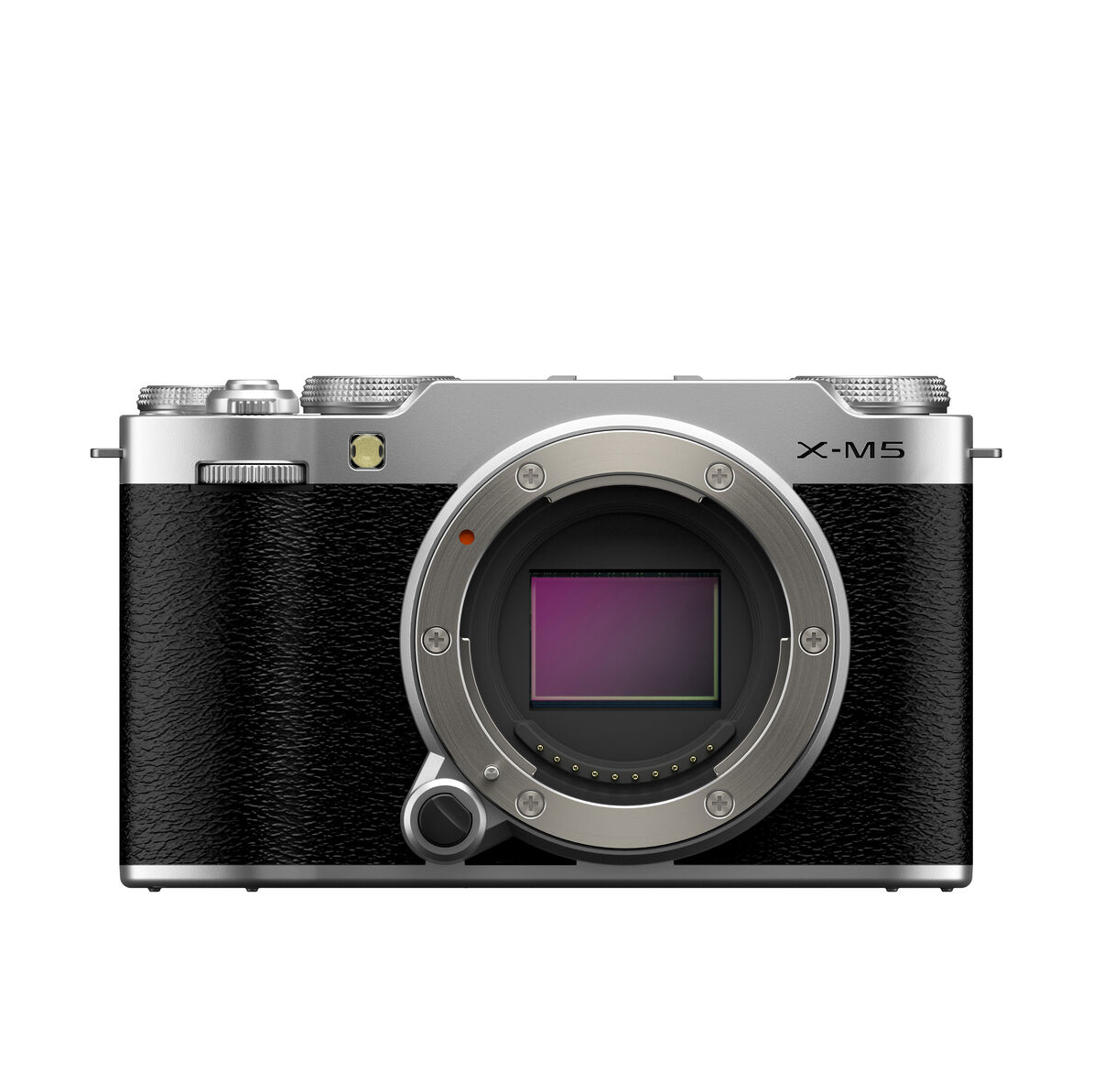
This is now the smallest camera in Fujifilm's range – perfect for slipping into a travel bag. It doesn't let up with features, with an APS-C sensor and Fujifilm's film simulations and recipes for great instantly sharable images. And for video – there is 6K open gate!
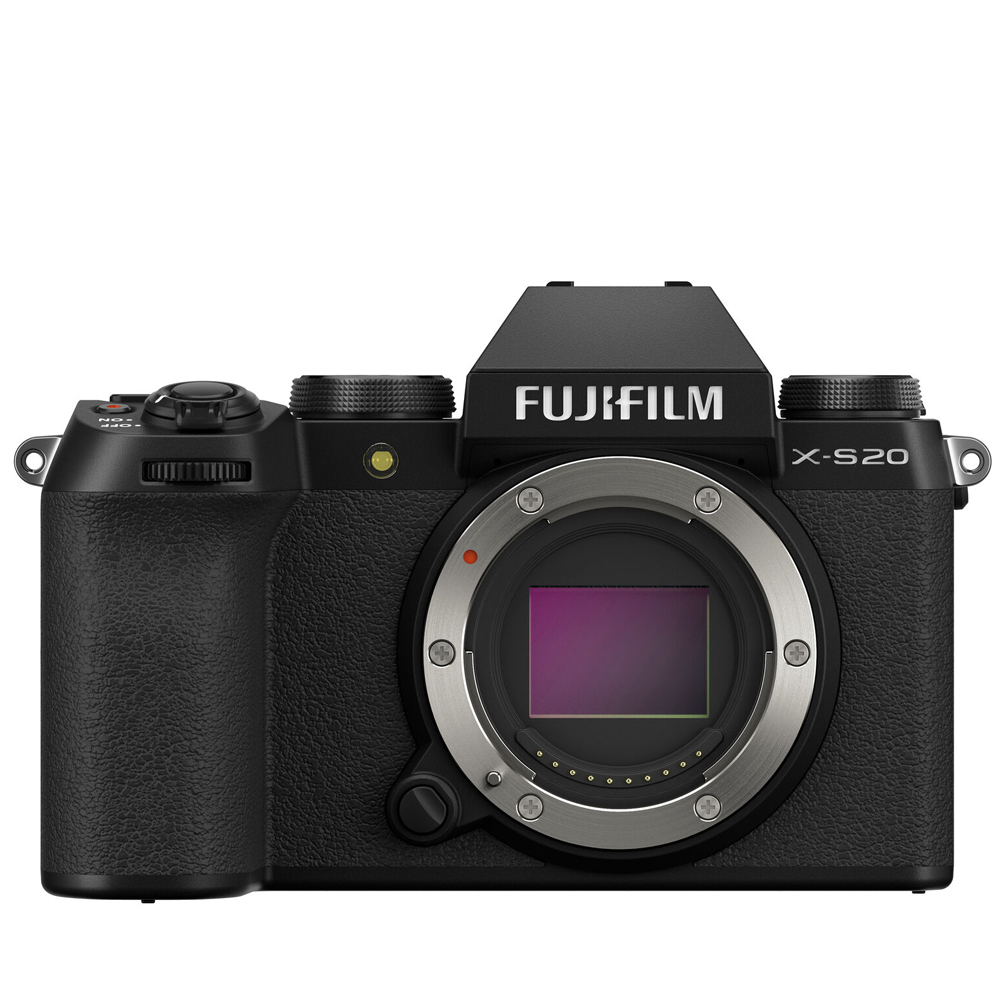
The Fujifilm X-S20 is a camera made for hybrid shooters, with great quality stills, but is set apart by its deceptively powerful video skills. This makes the X-S20 the perfect travel camera for any creator who is a versatile and lightweight camera that won't break the bank.
View the full list ⇩
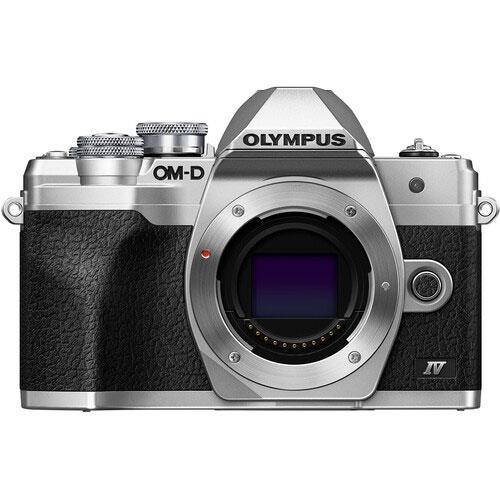
When picking the best travel camera, portability is essential. If you want to fit a whole photographic kit – that's a camera and several lenses into a bag, then the dinky but mighty Olympus OM-D E-M10 Mark IV is one of the best transportable camera systems you can get.
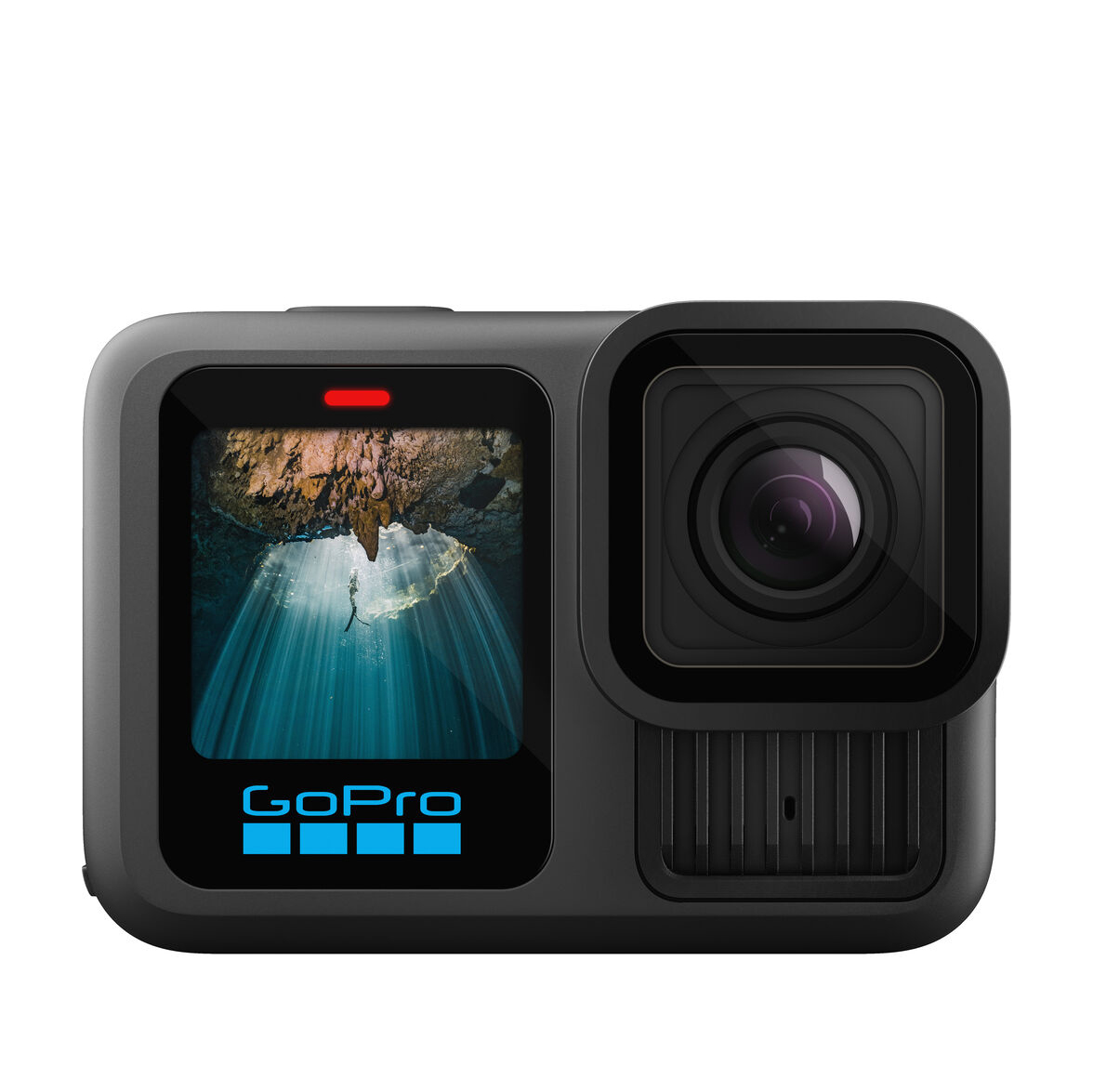
The name GoPro is basically now synonymous with action cameras, and the latest GoPro Hero13 Black takes all the powerful features from the previous models and ups the image and video quality even further. However, the sensor still struggles a little in low light.
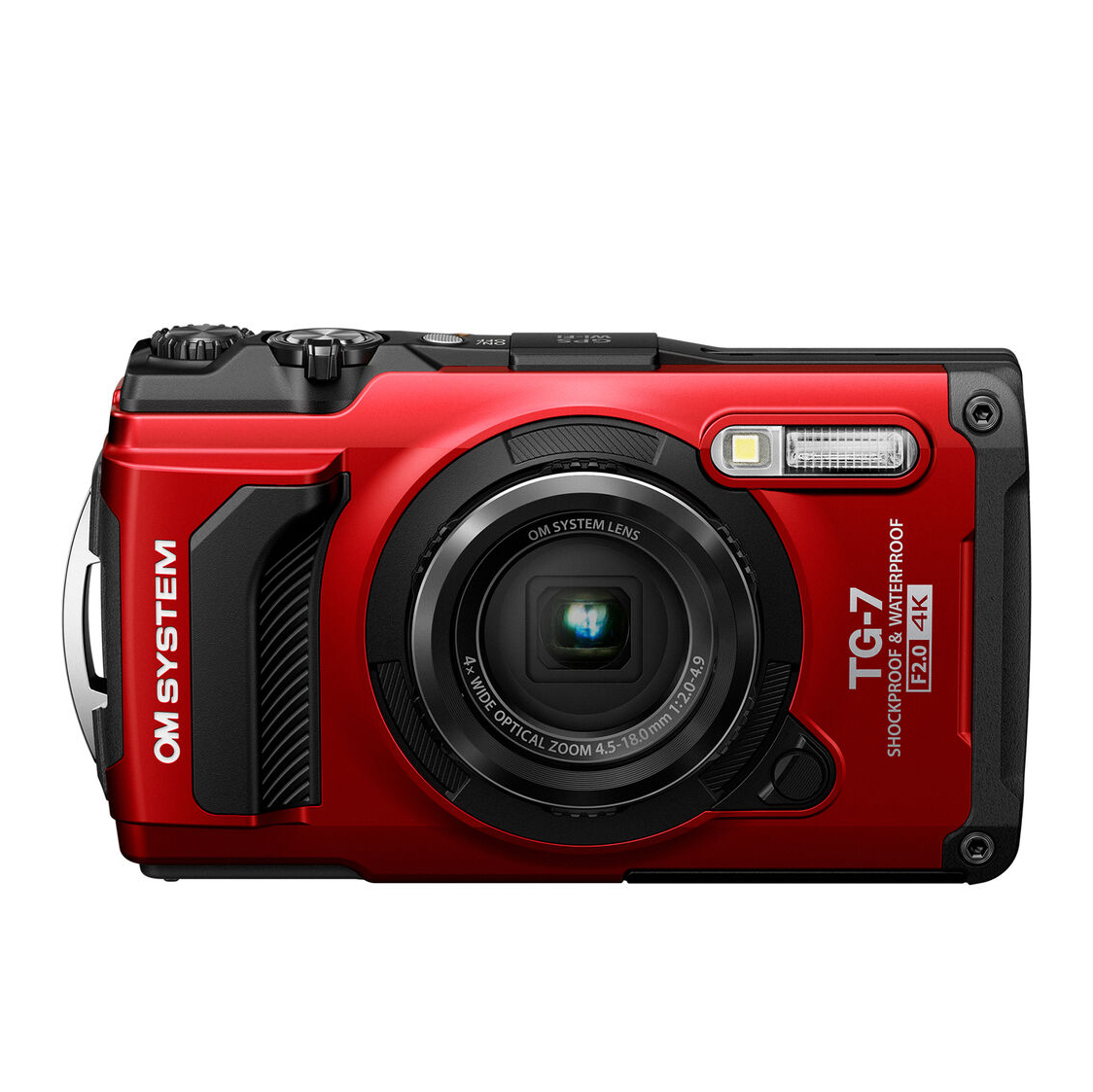
If you're planning on a coastal adventure then you need a camera that is fully waterproof and rugged enough to take on the most challenging adventures. This camera offers better stills than your average action cam, so if photos are your main priority – the Tough TG-7 is my top pick.
Best travel cameras: the full guide
Why you can trust Digital Camera World
Best travel camera overall
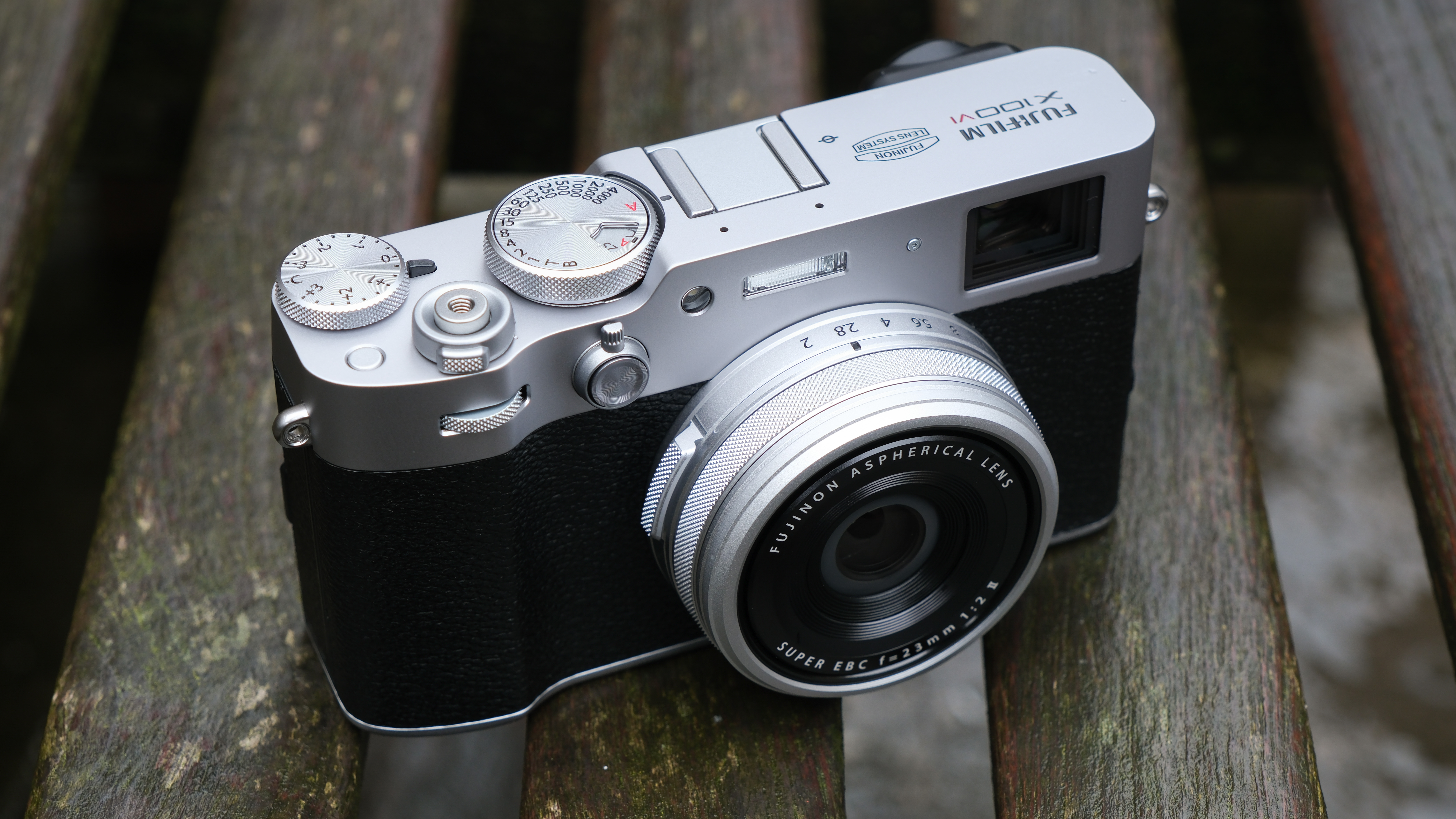
Specifications
Reasons to buy
Reasons to avoid
✅ You want a pocketable camera: the Fujifilm X100VI is a very compact camera, the whole package of camera and lens are so small that you can easily slip this into a jacket or rucksack pocket.
✅ You want a camera that looks good: The X100VI is easily one of the best-looking cameras you can buy. The stunning retro looks of old-school film cameras are matched with superb build quality.
❌ You want a range of lenses: the lens is fixed on the X100VI, so you are stuck with the 23mm focal length, although its digital cropping modes give the illusion (but not performance) of more focal lengths
❌ You want a cheap travel camera: the X100VI has a premium price tag, and there are options that produce a similar image quality, if you don't mind a different style of camera that is.
If you are looking for a camera for traveling, then one of the major things to look out for is something small and lightweight that can easily slip into a bag or a jacket pocket and won't be a drag to carry around for long periods – enter the Fujifilm X100VI.
The X100VI is a fixed-lens camera, which means that it has a single lens that can't be changed. The lens is 23mm, or equivalent to a 35mm length lens on on a full-frame camera, a perfect length for travel photography as it is wide enough to get in landscapes and street scenes, but narrow enough for portraits and family shots. While there are converters available for the X100V to change the length of the lens, I find these have an adverse effect on image quality, but the X100VI does have a trick to crop images when taking them to give the illusion of additional focal lengths, although at a reduced pixel count.
The X100V 40MP photos however are stunning and packed with detail. There is also human, animal, bird, and vehicle autofocus tracking, so you can snap away with confidence that your shots will be in focus. Finally, image stabilization helps cut out hand jitters in low light or shooting video, for more stable footage.
For those who want to share travel snaps as you go, you get access to Fujifilm's awesome film simulations and custom recipes, which takes the work out of editing, and with WiFi and Bluetooth connectivity and the Fujifilm X App, you can quickly share ready to post photos and video to social from your phone.
The X100XI form factor and tilt-only screen mean this is not the most ideal camera for video on this list, but you can get 6.2K (cropped), 4K, or HD video with slow motion reaching 240 frames per second. If you are more serious about video then check out the Fujifilm X-S20 below.
The X100VI's design will certainly catch a few eyes while traveling. The camera is lovely to hold, made with premium materials, and with a wonderful hybrid optical viewfinder that shows either the optical view or how it looks through the sensor with a flick of a button. However, one major downside for travel – the X100VI lens is not weather-sealed without an adapter, which comes at an additional cost.
Speaking of cost, this premium camera comes at a premium price, with some similar tech available for less in other models. But for the build quality and features, I think it does a lot to justify its higher price, but if you want the best compact camera, there is nothing better than this.
| Features | Big 40MP sensor, improved AF an IBIS makes this one heck of a good compact camera for traveling | ★★★★★ |
| Design | Not much has changed from the X100V, but this is still a stunning travel camera to turn a few heads | ★★★★★ |
| Performance | The images from the 40MP sensor are stunning, especially combined with Film Simulations. Video is also great, but there are better options | ★★★★★ |
| Value | Everything about this camera is premium including the price. There are cameras of similar capabilities for less, although with less style | ★★★★ |
Read more: Fujifilm X100VI review
The best travel camera for versatility

Specifications
Reasons to buy
Reasons to avoid
✅ You want a compact and lightweight camera: the a6700 comes with Sony's top specs in its most portable body.
✅ You want a great hybrid camera for content creation: not just a great camera for stills, the a6700's 4K video with excellent tracking and stabilization offers a killer hybrid experience.
❌ You have big Sony lenses: while you can use any E-mount lens, the a6700 becomes very front-heavy with big lenses, but Sony has plenty of excellent smaller lens options.
❌ If price is an issue: the a6700 is a top camera but comes with a price to match. There is a lot of cheaper options if you can compromise on specs from Nikon, Canon, Fuji, and Sony cameras in its ZV line.
The Sony a6xxx series has always been a favorite among photographers who value portability and versatility, with Sony continuously managing to squeeze more impressive features into the range while maintaining its incredibly compact form factor. The latest addition, the a6700, is a step forward from its predecessor, the a6600, boasting upgraded autofocus and in-body image stabilization.
The camera retains the compact APS-C design, although the button layout has been improved, as well as the menu system making for a more enjoyable to use camera, although with a body as compact as this, the layout is still a little cramped. This is especially true when handling larger full-frame lenses with the a6700, which remains somewhat awkward, but if you opt for Sony's smaller enthusiast lenses, you'll find a better balance, but distinguishing between the two formats can be confusing.
Although this lens conundrum is also one of the camera's biggest strengths. The a6700 can take the huge range of E-mount lenses from Sony, or third parties like Sigma and Tamron – which makes this one of the most versatile cameras you can get. The a6700 paired with a compact lens can be small enough to slip into a pocket for city breaks or can be attached to the end of a big telephoto zoom for safaris.
For keen photographers, the a6700 is capable of some stunning images, and improved tracking, faster shooting speeds, and in-body image stabilization make it easier than ever to ensure you get top photos. For hybrid creators, the a6700 also has impressive 4K60p video capabilities, oversampled from 6K, although if video is more your thing that stills, the Sony ZV range like the ZV-E10 II, might be a better choice.
Although pricier than its predecessor and some competitors, the a6700 offers a lot of impressive features, although there are a lot of challengers from Nikon, Canon, Fuji, and Panasonic nipping at its heels if you can compromise on the a6700's compact design.
| Features | Excellent stills image quality and oversampled 4K video, backed up by all the lastest Sony AI features for autofocus, as well as solid IBIS. | ★★★★★ |
| Design | The compact design is perfect for a travel camera, but its small body makes it very unbalanced with large lenses. | ★★★★☆ |
| Performance | Image and video quality is better than ever, but the latest processor shines when it comes to autofocus speed and accuracy. | ★★★★★ |
| Value | A little more expensive than some rival cameras that offer similar features but can't match the a6700's compact design. | ★★★★☆ |
Read more: Sony a6700 review • Best lenses for Sony a6700
Best full frame on a budget
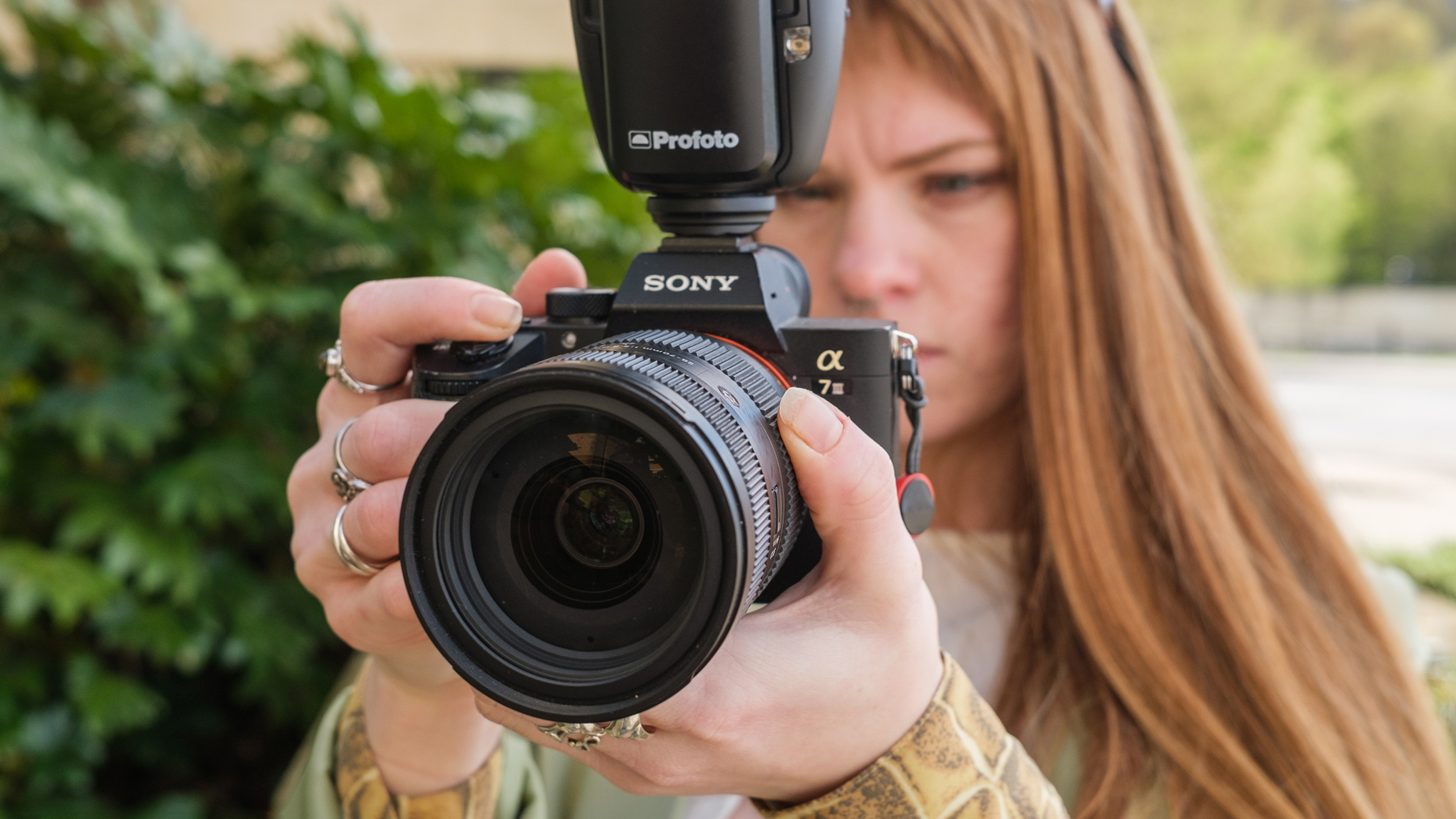
Specifications
Reasons to buy
Reasons to avoid
✅ You want full frame quality: full frame cameras can produce more focus separation and are better in low light, the A7 III is the most affordable step into full frame.
✅ You want a camera to use outside of traveling: the A7 III is a pro-level camera that is not just for travel, you can shoot brilliant photos all year round with a multitude of lenses available for different subjects.
❌ You don't want the expense of lenses: the cost of lenses can add up, especially ones for full-frame cameras, if you want to keep costs low, choose a fixed lens camera or an option with smaller cheaper lenses.
❌ You want a small camera: the A7 III isn't huge, but it also isn't small. With a lens attached, it is going to take up quite a bit of room in a bag, and won't be sliding in any pocket.
While the Sony A7 III might be the oldest Sony Alpha camera still being sold as new, even being replaced by a newer Sony A7 VI, it more than holds its own today. Any photographer looking for an excellent full-frame hybrid camera for traveling should seriously consider this camera as an option.
Why? Well, I don't think there is a better value full-frame camera out there, which when traveling can take some of the jeopardy out of damaging or losing your incredibly expensive kit.
It might be getting on a little, but the camera still has a very competitive 24.2MP back-illuminated image sensor, which delivers great tonal range and makes high ISO settings possible, which anyone who is shooting a lot in low light on their travels will really appreciate. A 5-axis image stabilization system also delivers less shake when shooting at night, or capturing video.
And if you are also looking to get some video footage on your travels then the A7III has very capable 4K video, although has been surpassed by a few other models on this list which would be more suitable if video is a priority.
The A7III has a speedy and accurate 696-point AF system, and while not the latest algorithms, the A7 III also has some solid human face and eye tracking, so you can take reliably focused photos of your friends, family, or any interesting denizens you meet out on your travels.
Whilst the A7III can be thrown a little off-balance with big pro lenses, Sony's lens range is extensive and there are many smaller primes to suit this camera perfectly for those who don't want to carry a lot while traveling. Or superzoom lenses like the Sony FE 24-240mm will empower you to capture everything from near to far.
| Features | Not the newest model, but the only full frame sensor on this list still offers enough spec for great photo and video | ★★★★★ |
| Design | It's compact and lightweight size makes it an excellent option for travel, although can be front heavy with big lenses | ★★★★★ |
| Performance | 24MP stills, and 4K video supported by a great autofocus system, it still has specs to keep up with todays cameras | ★★★★★ |
| Value | The best value full-frame camera with an extensive range of affordable first and third-party lenses | ★★★★★ |
Read more: Sony A7 III review • Best lenses for Sony A7 III
Best point and shoot travel camera
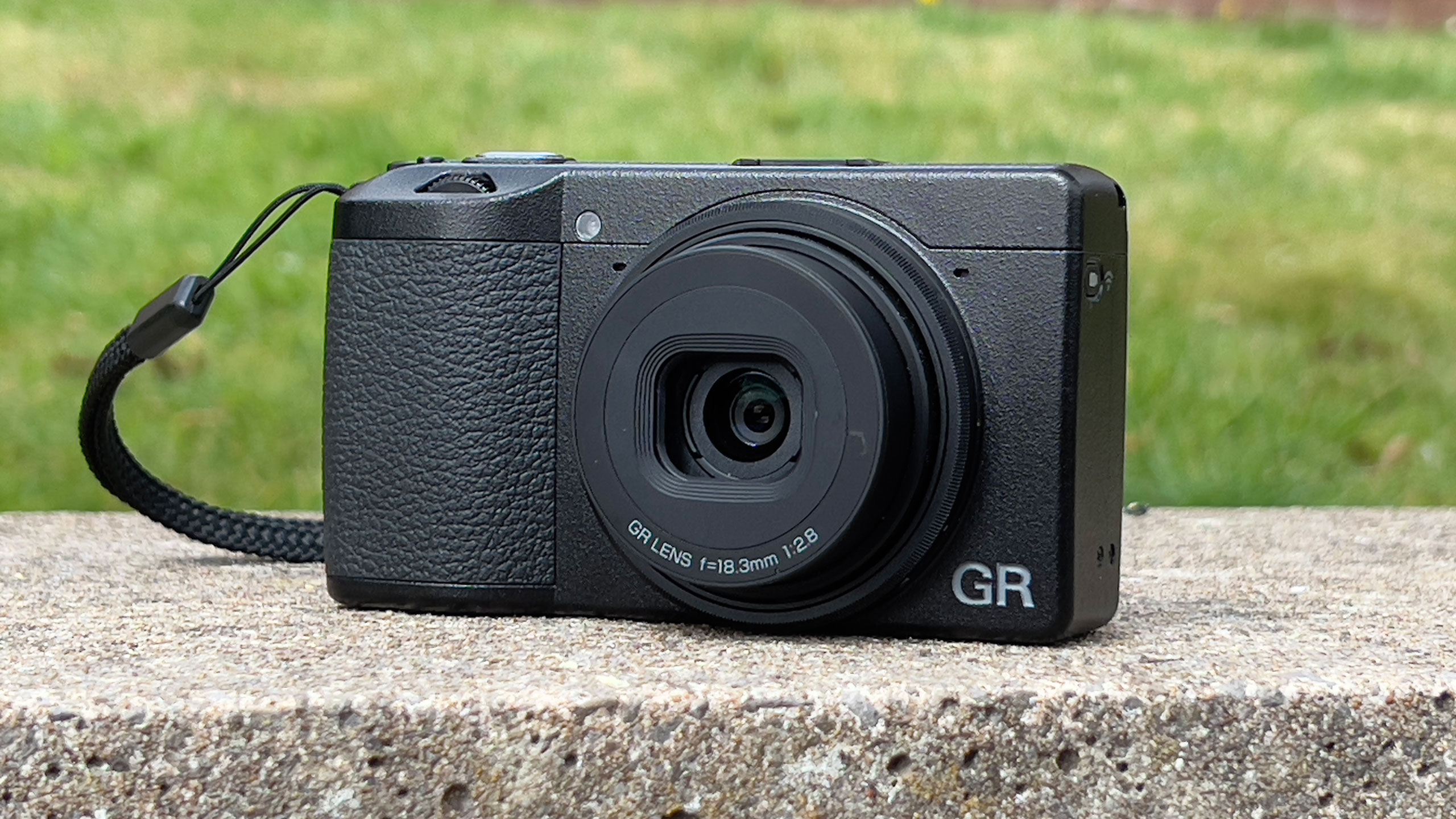
Specifications
Reasons to buy
Reasons to avoid
✅ You want an incredibly compact camera with a big sensor: leaves similarly sized compacts in the dust with an APS-C-sized sensor.
✅ You want a discrete camera: the GR III looks sleek and discrete if you don't want to look like a "photographer" on your travels
❌ You shoot a lot of video: the GR III HDF only has a very disappointing 1080p top video resolution.
❌ You want to change focal lengths: despite appearances, the GR III's lens is fixed at 28mm, and 24MP offers limited cropping.
Despite a few flaws, how could I leave the Ricoh GR III HDF off this list when it so perfectly blends exactly what I am looking for in a travel camera – incredible portability and impressive image quality?
There are a lot of compact point-and-shoot cameras around this size, but where most of those cameras have little sensors in, astonishingly Ricoh has squeezed an APS-C-sized sensor into a camera that can fit comfortably in a pocket. Paired with the super sharp lens with an f/2.8 aperture, this will give you better light gathering, better depth of field, and higher quality images than smaller sensor cameras.
I also think the physical controls are well-designed and easy to use despite the camera's petite size. However serious photographers who want to get in-depth with manual photography might find more enjoyment with cameras from Fujifilm or Olympus.
I found the HDF filter to be a bit of a trade-off. While it replaces the standard camera's 2-stop ND filter, I noticed that 2 stops didn’t really make much difference in achieving motion blur in bright light. The effect of the HDF filter itself is quite subtle, making it hard to tell if I’d used it at all, and since it’s a ‘hard’ effect, there’s no going back if I change my mind later. Personally, I prefer applying these kinds of effects during post-processing for better control. You can still buy the version of the GR III with an ND filter, but there is more stock available of this newer HDF version.
Unfortunately, there are several limitations to the GR III that are worth considering. For starters, there’s no electronic viewfinder (EVF), and if I wanted to use an optional clip-on viewfinder, you have the option, but I think it is far too pricey. One thing I struggled with was the rear screen’s visibility in bright conditions unless I cranked the brightness to the max, but that had a knock-on on effect to the battery life, which only lasted about 200 shots and wasn’t sufficient for longer days of exploring.
The camera features a fixed focal length lens, and while there’s a crop mode for extended focal lengths, it means sacrificing resolution. There’s also a twist-on optical wide-angle conversion lens available, but I found it to be bulky and not budget-friendly.
| Features | Good lens but a fixed focal length and only 1080 video. | ★★★☆☆ |
| Design | Incredibly compact but no EVF and a fixed screen. | ★★★★☆ |
| Performance | Excellent image quality all round, even at higher ISOs. | ★★★★★ |
| Value | Great quality but limited and expensive. | ★★★☆☆ |
Read more: Ricoh GR III HDF review
Best travel camera for video
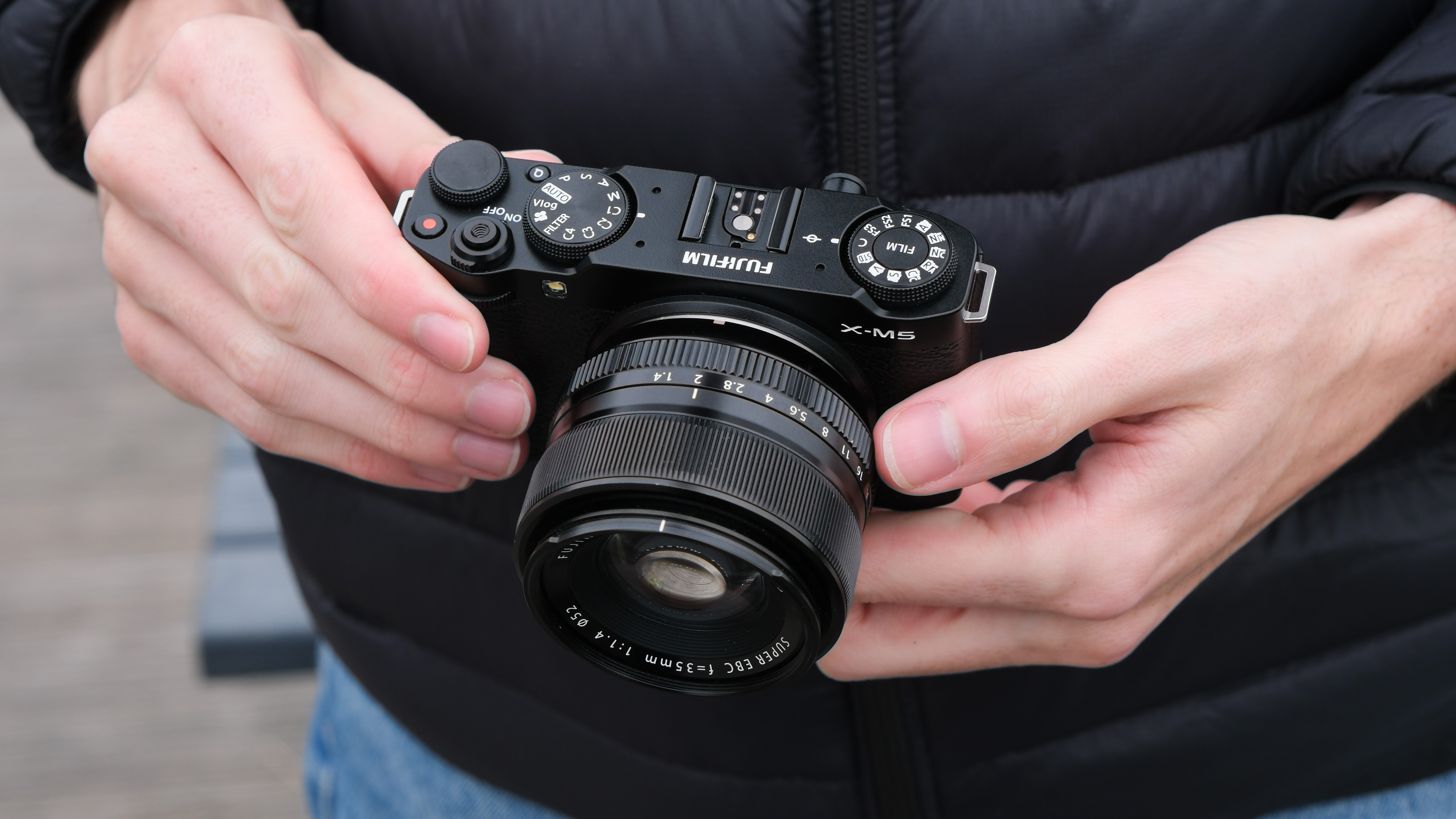
Specifications
Reasons to buy
Reasons to avoid
✅ You shoot vertical and horizontal video: the X-M5's open gate video gives you a full sensor readout with more room for cropping and framing.
✅ You want Fujifilm's tiniest camera for film simulations: film sims are incredibly popular and this is the cheapest and smallest way to get in on the act.
❌ You prefer a viewfinder: with no EVF, the only way to frame shots here is to use the screen.
❌ You use big lenses: few of Fuji's XF lenses are massive, but this small camera doesn't pair well with bigger zooms like Fuji's 18-135mm travel lens.
When it comes to finding the perfect travel camera, the Fujifilm X-M5 stands out for several reasons. It's compact and stylish, making it easy to carry during your adventures. It also boasts impressive specifications that outshine many of its direct competitors – all while being more budget-friendly than most rival models. If you're looking for a great value camera, the X-M5 is hard to beat.
For vloggers and video creators, the X-M5 is particularly noteworthy. It offers excellent video performance for an affordable camera, which makes it a top option for content creators on the go. The open-gate feature is especially valuable as more content seeks to fit various aspect ratios, providing versatility that many rivals lack. However, if you're primarily shooting in standard 4K, there might not be a compelling reason to switch from another brand if you're already invested in their ecosystem.
When it comes to photography, the absence of a viewfinder might be a drawback for some. However, if you’re accustomed to taking photos on your smartphone and composing images on a screen, this shouldn’t pose much of a challenge. The autofocus system is incredibly efficient, thanks to the latest processor that grants access to Fujifilm’s advanced algorithms – and the X-M5 comes with all of Fujifilm's latest film simulations for instantly sharable photos without editing. Ultimately, despite the slightly older sensor, the image quality is impressive, delivering results comparable to cameras that cost significantly more.
The Fujifilm X-M5 is a top contender for anyone seeking the best travel camera, offering a blend of style, functionality, and great value. Whether you're capturing memories on the move or creating video content, it deserves a spot on your list of cameras to consider.
| Features | Powerful video specs and the latest AF. | ★★★★★ |
| Design | Solid-feeling compact body with small lenses to match. Although no EVF for photographers. | ★★★★☆ |
| Performance | Great quality stills and video, with film simulations offering ready-to-share content. | ★★★★★ |
| Value | Undercuts rivals on price but not on power. | ★★★★★ |
Read more: Fujifilm X-M5 review
Best hybrid camera for travel
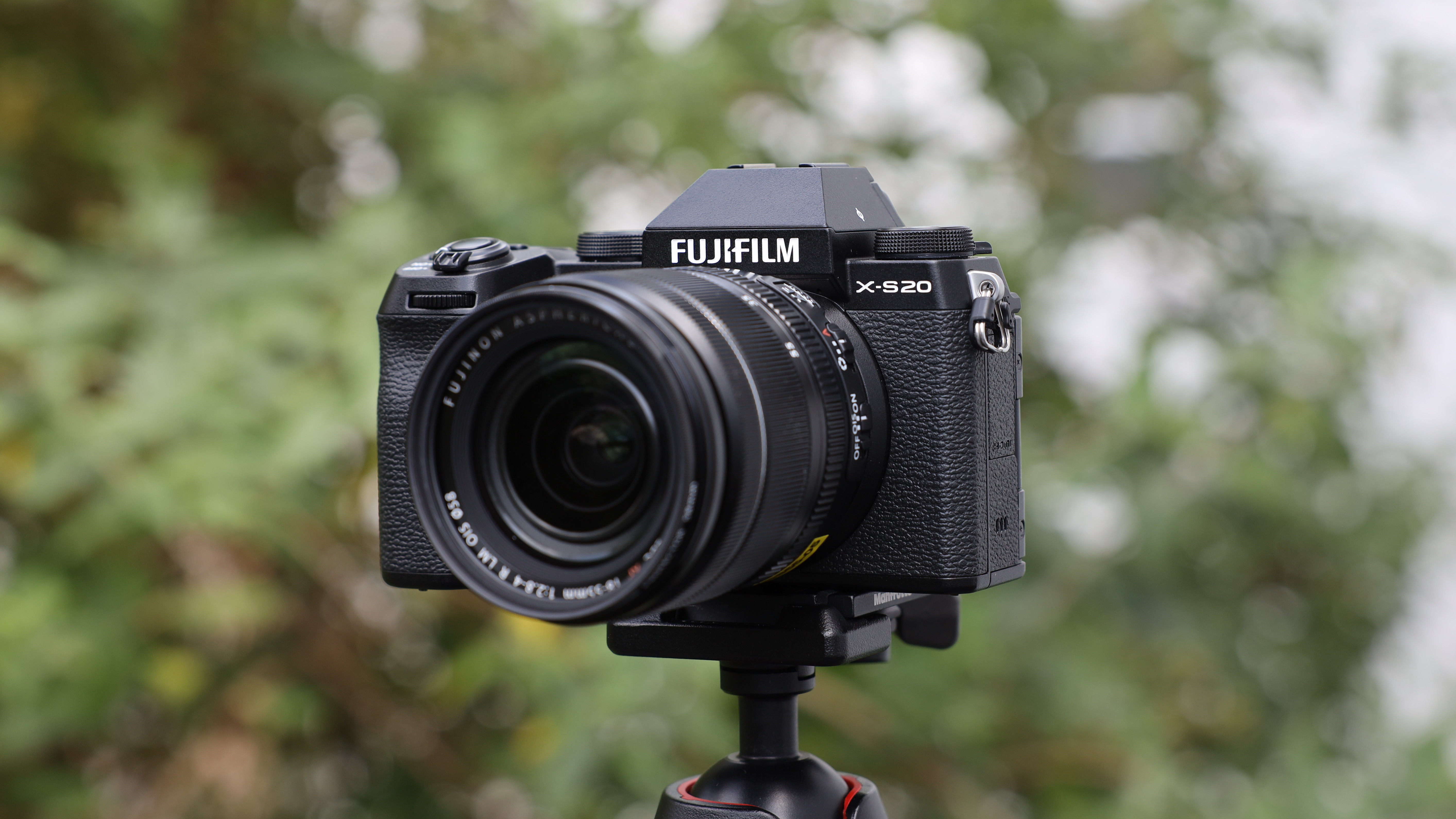
Specifications
Reasons to buy
Reasons to avoid
✅ You shoot video and photos: the Fujifilm X-S20 is the best of both worlds, with great-looking photos and awesome video skills too!
✅ You want to balance price and features: the X-S20 offers a lot for its price, and it is one of the best-value cameras around, you will struggle to find matching video specs at this price point.
❌ You don't really care about video: Fuji's X-T5, X-T50, and X100VI might suit photographers more than the X-S20 with higher megapixel counts for stills.
❌ You might need weather resistance: the X-S20 is not weather-sealed, so if you plan to get adventurous, a camera that can handle dust and water might be a better choice.
When I tested the Fujifilm X-S20 I was just so impressed at the amount of features that Fujifilm had managed to squeeze into its petite body – it's not just a great stills camera, it is also one of the best video cameras available, and the cherry on top, it is really well priced! For anyone looking for a hybrid camera to shoot a mix of photos and video, I think this is the best hybrid camera for any traveler right now.
Fujifilm chose not to update the X-Trans IV sensor from the X-S10, but this sensor despite its age still holds up very well today when it comes to stills. The X-S20 is also able to use Fujifilm's excellent film simulations and programmable film recipes to create ready-to-use images straight from the camera, which makes any regular social media posting that much easier. The new X-Processor 5 also brings brand new subject recognition and tracking autofocus, making taking photos on the fly quicker and more reliable.
Despite its compact size, the X-S20 is a deceptively powerful video camera. The new processor combined with the modest resolution sensor means the X-S20 is capable of 6K video using the entire sensor (open-gate). The camera is also capable of numerous codecs and F-Log for getting in-depth with color grading. The subject recognition and tracking also carry through into videos and there are dedicated vlogging video features too.
Some might prefer the classic retro style like the X-T5 or X-T30 II, but with fewer manual dials, the X-S20 is a more user-friendly camera, with a more useful fully articulating screen than any of the X-T range. The camera is small, but handling is great with enough of a comfortable grip for long days, and the camera pairs really well with Fujifilm's small zoom and prime lenses, making traveling light with a kitted-out X-S20 a little easier. While the price is a little higher than the X-S10 that preceded it, I think the price bump is justified as this is one capable camera for traveling.
| Features | Best of both worlds with a 24MP sensor and 6.2K open gate video, backed up with some much improved AF | ★★★★★ |
| Design | This is a small and lightweight camera, which paired with Fuji's small lenses is a breeze to carry while traveling | ★★★★★ |
| Performance | The video performance is exceptional for a camera of this price, photos are also excellent, especially paired with film simulations | ★★★★★ |
| Value | While other Fuji cameras have more megapixels, the X-S20 strikes a very good performance-value balance | ★★★★★ |
Read more: Fujifilm X-S20 review
Best travel camera for size
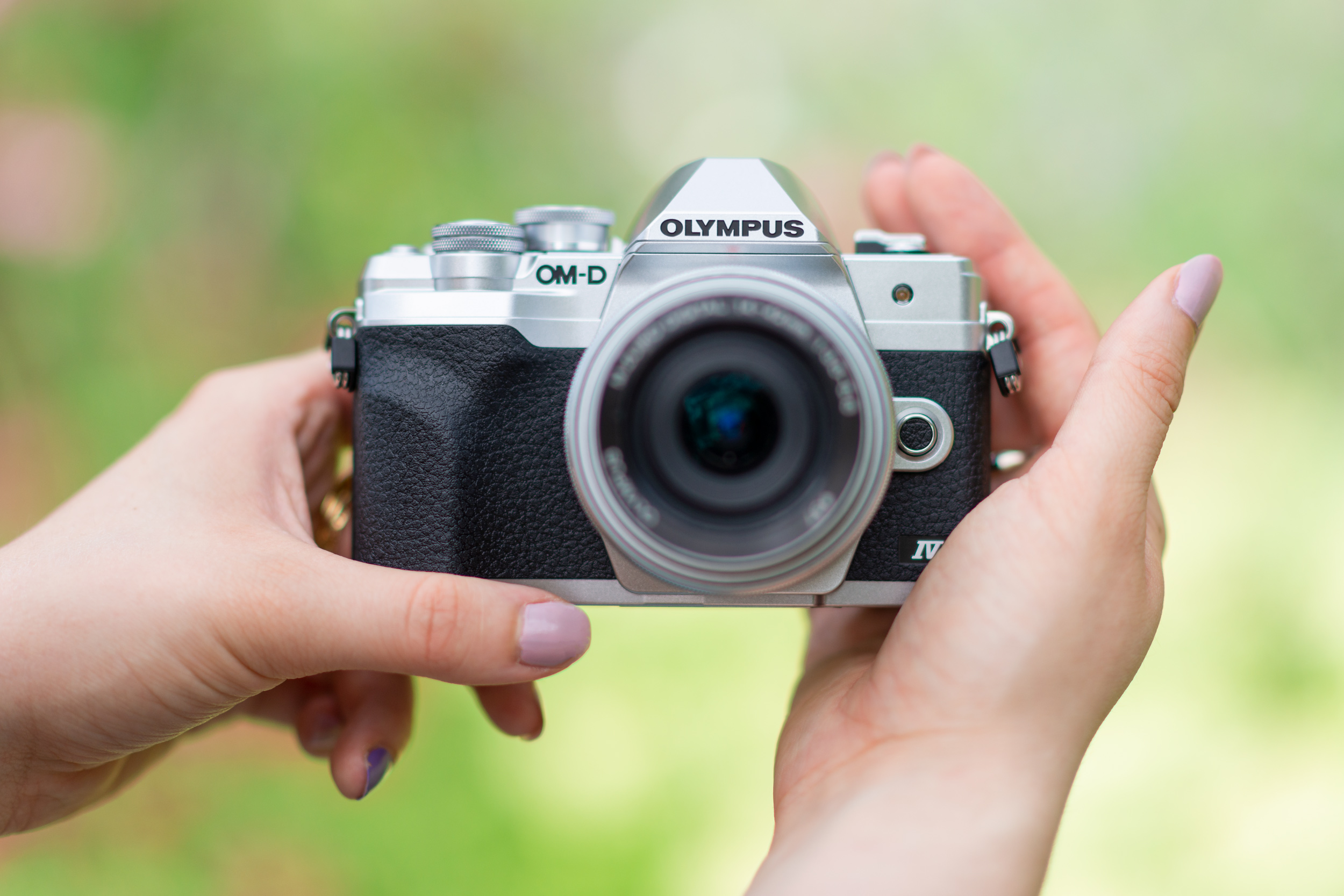
Specifications
Reasons to buy
Reasons to avoid
✅ You want a small system: the whole OM Micro Four Thirds system is tiny, with small cameras and lenses, so you can take a lot more gear to cover more subjects.
✅ You want a good-looking camera: with a cool vintage style based on Olympus's OM film cameras, the E-M10 IV looks as good as the footage it shoots.
❌ You shoot a lot in low light: the Micro Four Thirds sensor in the E-M10 IV doesn't handle low light as well as larger sensors, not good for frequent nighttime shooters.
❌ You won't use the retro dials: if you are looking for just fast auto controls then the dials on the top of the E-M10 IV will be largely redundant for your needs.
When picking the best travel camera, we're focusing on portability, and the dinky but mighty Olympus OM-D E-M10 Mark IV is one of the best portable cameras around if you are looking for a whole system including lenses that can easily slip into a bag. The best Olympus lenses include positively tiny optics that can go a long way for travel photography, helping you keep your kit and weight size down. So if you are the type of carry-on-only travel photographer but with big photography ambitions then this is for you.
Not only does it have an incredibly lightweight body, but the camera will look great on your travels too, with a cool retro design that harks back to Olympus's long pedigree in film cameras. The camera has tactile dial-led controls for anyone who wants to get creative with manual photography, although don't let that fool you into thinking the camera is complicated, as there are lots of automatic modes and helpful features built into the camera.
The OM-D E-M10 Mark IV uses the smaller but still powerful Micro Four Thirds sensor. This has some slight disadvantages in terms of low-light capabilities, so if you like to go out a lot at night when you travel, then a larger sensor might be better for you.
But Micro Four Thirds does have one big advantage, it effectively doubles the focal length of any lens mounted to the camera; so a 50mm will behave like a 100mm, so if you are about to head off on safari, then this could make all the difference to getting up close to wildlife. Its snappy burst shooting, its accurate autofocus, and its impressive 4K video will also all assist you with creating amazing content. It's a terrific all-around camera.
| Features | Snappy autofocus, 4K video and 20MP stills, and the MFT sensor provides extra reach for getting closer to subjects | ★★★★☆ |
| Design | Tiny body makes this an excellent travel camera to slip into a pocket or bag, the lenses are also small so you can pack a few | ★★★★★ |
| Performance | The 20MP might be a little small by todays standards, but the image and video quality are still superb for social media, and autofocus is very reliable | ★★★★★ |
| Value | Excellent value for the features with no premium for the pretty retro design and build of the camera | ★★★★★ |
Read more: Olympus OM-D E-M10 Mark IV review & Best Olympus lenses
Best action camera for travel

Specifications
Reasons to buy
Reasons to avoid
✅ You need a camera that can survive the elements: if you are planning on getting wet, cold, or sandy then the GoPro can survive it all.
✅ You want a tiny camera for attaching to things: you can stick this to a helmet, handlebars, surfboards, you name it, there is a likely a mount for it.
❌ You want the best low-light performance: the GoPro's sensor isn't especially good in low-light
❌ You want to take a lot of photos: the GoPro's wide-angle lens takes interesting perspective photos, but they are quite limited
After a few missteps with the Hero12 – the Hero13 Black brings back everything that was great about the Hero 11 Black and refines it.
And yes, the one major omission from the GoPro Hero12 has been corrected, GPS is back! As well as tracking and tagging your location, it can also overlay graphics to videos to show routes or elements like g-force. Although, if you never cared about GPS then the Hero12 Black, has the same hardware, and can now (usually) be found cheaper.
What really separates the Hero13 from the 12 though is GoPro's new range of lenses – currently consisting of a series of ND grads, a close-up lens, and an even wider mod, and soon to include an anamorphic lens as well! The Hero13 can recognize any of these lenses automatically, and adjust the picture to match, it works like magic. These lenses have had me more excited about an action camera than I have been for years, and begin the fightback against increasing camera phone competition.
Down to brass tax. When it comes to video, the colors and quality of GoPro's footage still put it out front compared to competitors – in good light that is. The Hero12 unfortunately suffers quite a lot in low light, with the smaller pixels in its 1/1.9-inch not up to its chief rival – the DJI Osmo Action 5 Pro. But while GoPro hasn't cracked lowlight video, for anyone who wants detail in bright environments, I'd still call the 13 Black the best action camera for video.
GoPros' HyperSmooth 6.0 image stabilization continues to be incredible at producing gimbal-like footage without the gimbal, and the AutoBoost feature seamlessly gets the steadiest footage at the widest crop. New HDR modes and Log recording also work well in bright environments to push details in the highs and shadows further.
Finally, photos are solid, again in good light, although the very wide angle lens of 156º limits how good this is as a photography camera, but in areas you wouldn't dare take a mirrorless or compact camera, it's perfect for getting a few snaps.
| Features | Still the top action camera highly detailed video, HyperSmooth stabilization and new audio recording features. | ★★★★☆ |
| Design | Classic GoPro design hasn't changed much, with fantastic adventure-proof build quality. | ★★★★★ |
| Performance | Video performance in good light is outstanding supported by excellent HyperSmooth 6.0 stabilization, although detail is low light is below par. | ★★★★☆ |
| Value | I am not sure that the GoPro offers enough new features to justify how close in price it is to older models. | ★★★★☆ |
Read more: GoPro Hero13 Black review
Best waterproof compact travel camera
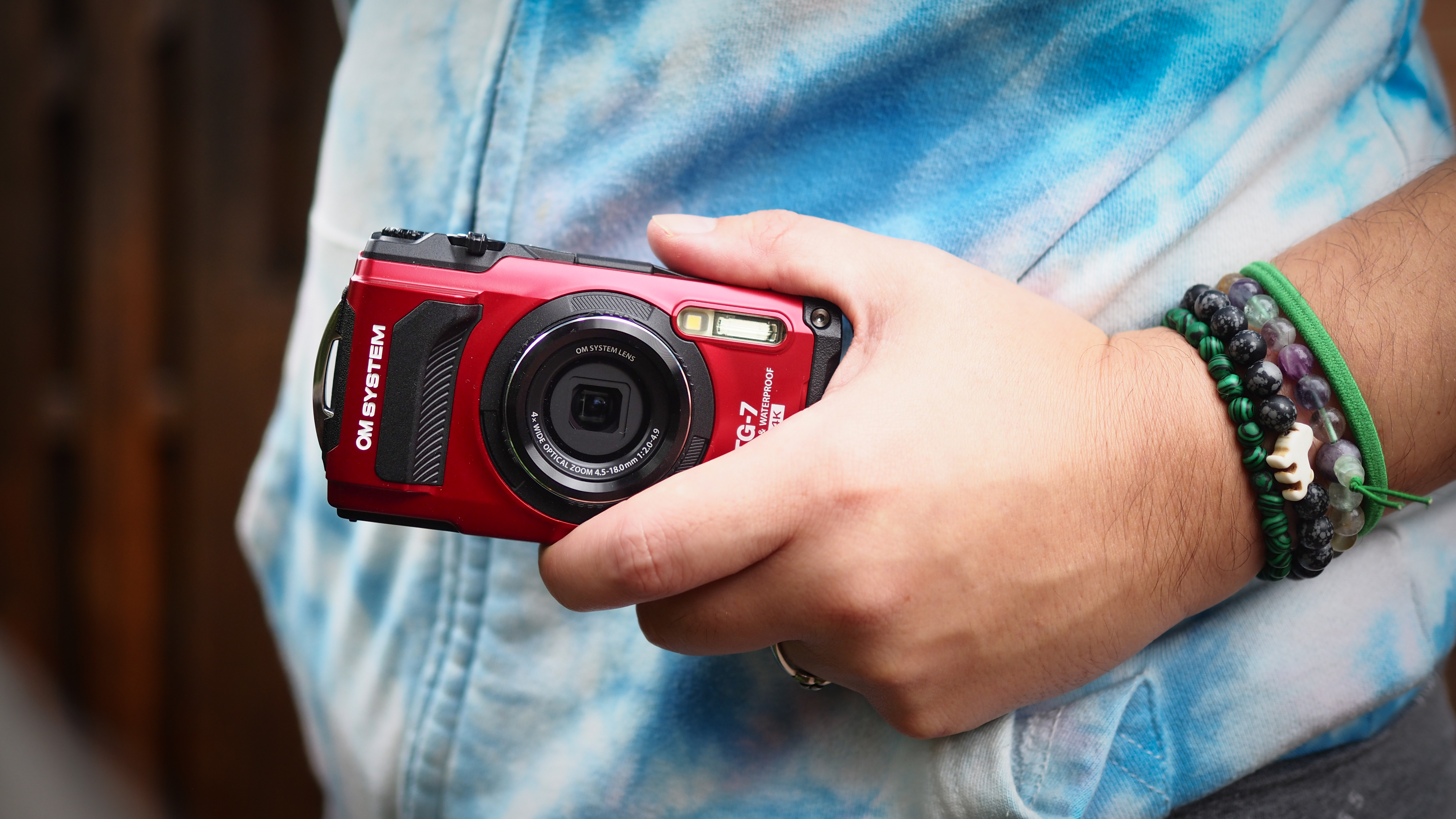
Specifications
Reasons to buy
Reasons to avoid
✅ You want a rugged adventure camera: the TG-7 can certainly withstand some serious adventuring with a rugged water/dust/freeze/drop-proof build.
✅ You want a photography-first adventure camera: the TG-7 puts photography first and foremost, offering a better experience than smaller fiddly action cameras.
❌ You want to strap the camera to things: while action cameras have numerous accessories to strap to your sports equipment, there is far less for the bigger TG-7.
❌ You only care about video: if you are just looking for the best rugged video camera for travel, then action cameras have you covered (see below).
Following the acquisition of Olympus's camera division, the OM System TG-7 is essentially an update to the much-loved Olympus Tough TG-6 under a new brand name. Although that camera has long been the top-regarded travel compact for adventurers who are as invested in photos as video. Action cameras might be smaller and just as hardy, but can't compete with the TG-7 for photography experience.
The TG-7 is ready for any travel adventure and is water-proof, dust-proof, crush-proof, drop-proof, and freeze-proof, so whether you are hiking, climbing, swimming, or otherwise take you to the hottest deserts to the coldest tundras, the camera should come out the other side unscathed.
The TG-7 might have a relatively conservative 12MP resolution, although this helps dramatically when it comes to low-light images, as each pixel is larger allowing it to capture more light. Why is this important? Well if you are shooting in darker underwater environments, in gloomy forests, or at night, then you will get higher-quality images.
The Touch also has RAW images, so you can get even more creative control over the final edit of your images. The camera also has a pretty incredible macro mode as well if you find some small details on your travels that you have to capture.
While it might not be up to the same standard as the best action cameras for video, the Tough can capture decent 4K video, and will get some perfectly serviceable footage for social and YouTube of your wild adventures!
| Features | Rugged waterproof camera that offers a bigger sensor for still images, especially in low light, and its zoom lens gives plenty of versatility | ★★★★☆ |
| Design | Compact, rugged, and waterproof, too big for an action camera, but built for photography with easy physical controls | ★★★★★ |
| Performance | Great stills quality, even if 12MP is very conservative, the clever macro modes are a joy though | ★★★★☆ |
| Value | Not much more than the best action cams, this is a the camera to buy if top quality stills in challenging locations are your thing | ★★★★★ |
Read more: OM System Tough TG-7 review
Honorable mentions
Sony A7C II: as the full-frame counterpart to the Sony a6700, the A7C II is every bit as impressive but somehow squeezes an even larger sensor into the same size body. However, I prefer the a6700 for this list due to its lower cost, and its APS-C sensor is plenty good enough. Read the full review...
Leica Q3 43: inside, this is essentially the same camera as the Leica Q3, but the key difference is the 43mm lens on this model. The decision is if you prefer a wider angle for sweeping panoramas or a tighter lens for closer detail (the latter being my preference). Read the full review...
Panasonic Lumix S9: this is a very compact full-frame camera that can slot into a jacket pocket or carry-on. The S9 is also very affordable. But why isn't it on my list? While the camera might be small, it doesn't have many lenses with a size to match – and the lack of a viewfinder will be a frustration to photographers. Read the full review...
Comparisons and Lab Data
At DCW, every camera we review goes through rigorous testing in our lab. This process generates the metrics you see below, which evaluate the camera's resolution, dynamic range, and noise levels. In each of these categories, higher numbers indicate improved performance.
| Header Cell - Column 0 | Fujifilm X100VI | Sony a6700 | Sony A7 III | GoPro Hero13 Black | Fujifilm X-S20 | Olympus OM-D E-M10 Mark IV | OM System Tough TG-7 | Leica Q3 | Kodak Pixpro FZ55 |
|---|---|---|---|---|---|---|---|---|---|
| Launch Price | $1,599 | $1,399 (body) | $1,799 (body) | $399 | $1,299 (body) | $799 (body) | $549 | $5,995 | $199 |
| Sensor | APS-C | APS-C | Full-frame | 1/1.9-inch | APS-C | Micro Four Thirds | 1/2.3in | Full frame | 1/2.3in |
| Megapixels | 40.2MP | 26.1MP | 24.2MP | 27MP | 26.1MP | 20.3MP | 12MP | 60.3MP | 16MP |
| Lens | Fixed 23mm f/2 | Sony E-mount | Sony E-mount | Fixed 156° FOV | Fujifilm X-mount | Micro Four Thirds | 25-100mm (equiv.) f/2.0-4.9 | Leica Summilux 28mm f/1.7 ASPH. | 28-140mm (equiv.) |
| IBIS | Yes | Yes | Yes | No | Yes | Yes | No | Yes | No |
| Screen | 3in tilting, 1.62m dots | 3-in vari-angle, 1.03m dots | 3-in vari-angle, 921k dots | 2.27in rear, 1.4in front | 3-inch vari-angle, 1.04m dots | 3in tilting, 1.04m dots | 3in fixed, 460k dots | 3.0-in fixed, 1.84m dot | 2.7-in, 230k dot |
| Viewfinder | OVF + EVF, 3,69m dot | EVF, 2.36m dots | EVF, 2.36m dots | None | EVF, 2,360k dot | EVF, 2.36m dot | None | EVF, 5.76m dot | None |
| Max Burst Speed | 20fps | 11fps | 10fps | NA | 30fps | 8.7fps | NA | 15fps | NA |
| Max Video Resolution | 6.2K30P (x1.23 crop) | 4K60p | 4K30p | 5.3K60p, 4K120p | 6.2K30p | 4K30p | 4K30p | 8K30P | Full HD |
How to choose the best travel camera
These are five key things to look out for when choosing the right travel camera for your needs.
1) Image quality: Ask yourself how you will use any photos or videos you capture. If you only plan to share content online on social media then any of the above cameras will be suitable. If you plan to print your pictures, though, then mirrorless cameras with larger sensors and higher megapixel counts will produce better-quality results.
2) Focal range: What kind of range do you need for your traveling activities? Compact cameras can have impressive zoom ranges, but to achieve their tiny size they often lack quality compared to mirrorless cameras. For mirrorless cameras, what lenses are available? So-called standard zooms are a great option for all types of travel, but they can also be large and heavy. A wide-angle lens might be best for capturing cities and landscapes, or if you are going to see wildlife or a sporting event then a compact telephoto lens might be best.
3) Size and weight: If you're going on vacation then the last thing you want to take is a heavy kit – especially given things like baggage restrictions when traveling. With that in mind, both your camera and lens(es) need to be small and light. If you want something that can fit in your pocket, get a compact camera – but if you don't mind taking a bag, a mirrorless system with one or two lenses could be more versatile.
4) Simplicity: Don't want to get bogged down with camera settings? Most modern cameras have a range of auto modes – especially compact cameras, which take away the stress. Advanced modes and complicated controls don't usually mix with spur-of-the-moment snaps, so decide what is important to you and pick your camera based on that.
5) Price: The cameras in our list have a range of prices, and we try to include cameras that suit every budget. The price of a camera usually reflects its capabilities, although all the options listed here will take great images and video – so try to strike the right balance between what you need in a camera and what you can afford.
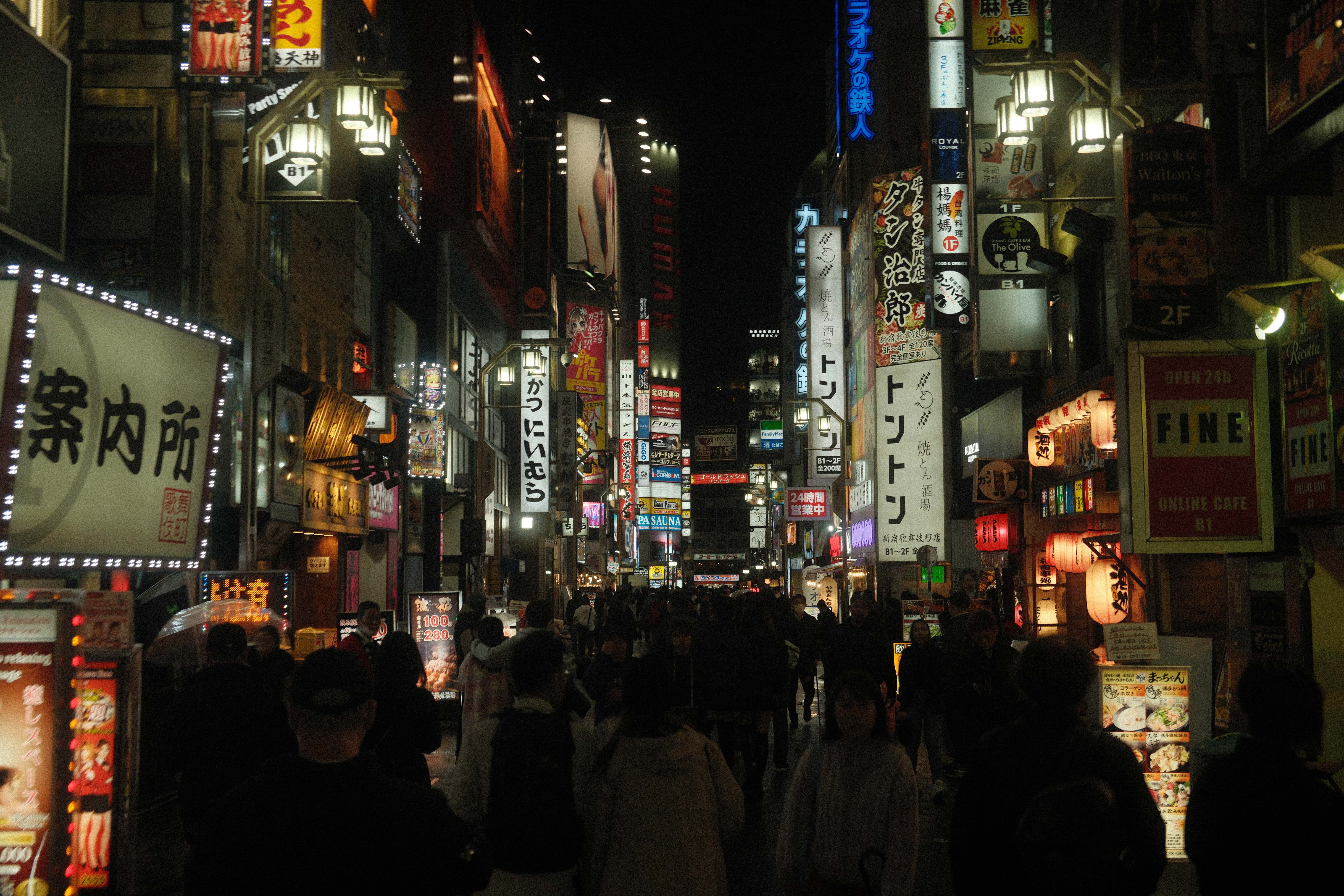
Is it better to use phone or camera for travel?
This really depends on what you are taking photos of and where those photos are going. Your phone can handle a few quick snaps for social media, but if you want the best quality for printing then a camera with a much larger sensor has the edge.
You also need to ask yourself if your travel plans make using a camera possible. Phones are so small and quick to use that they go where cameras are too bulky and slow to shoot. A great compromise is a compact camera which is the best of both worlds.
Is a DSLR or mirrorless camera better for travel photography?
As a travel camera, mirrorless cameras are usually the better choice for most people. They are much smaller and lighter than DSLRs, and also usually have a selection of smaller and lighter lenses to match. This makes traveling easier as it takes up less space and weight in increasingly restricted carry-on bags.
Mirrorless cameras also are generally newer than DSLRs and most likely have more modern technology, making photography and video easier to capture and of better quality.
What size camera lens is best for travel?
Again, this comes down to what your travel plans entail and what you plan to shoot.
A good place to start is with the kit lens that comes bundled with many cameras as this will cover the most commonly used focal ranges. Kit lenses are generally very small and light, although the cheapest kit lenses do not typically deliver the best image quality, so you might want to think about upgrading as you develop.
I personally travel with a single wide aperture prime lens, with my preferred length being 35mm. A prime lens such as this is a versatile focal length for different subjects, is generally a small lens and wide apertures are great in low light.
Then there are superzoom lenses that cover the widest range possible in one lens, while also trying to ensure that lens remains a travelable size. I'd recommend checking out the best lenses for travel photography to see what's right for you.
How we test travel cameras
When we are reviewing cameras, we carefully think about what scenarios each camera could be used for. So when considering which cameras would make ideal travel cameras, we judge each camera on how small and lightweight it is for easy packing and transport, as well as carrying for long periods of the day while out exploring.
We also consider the technical capabilities of each camera, and how suitable they are specifically for travel photography scenarios from beach vacations, to safaris, to city breaks. Finally, we consider the price of the cameras to select options that cover a range of budgets and requirements.
We use our real-world experience with each camera and our in-depth camera knowledge to determine a final selection of top cameras that we would recommend as the ideal camera traveling companions.
Find out more about how we test and review on Digital Camera World
Deals
Get the Digital Camera World Newsletter
The best camera deals, reviews, product advice, and unmissable photography news, direct to your inbox!

Gareth is a photographer based in London, working as a freelance photographer and videographer for the past several years, having the privilege to shoot for some household names. With work focusing on fashion, portrait and lifestyle content creation, he has developed a range of skills covering everything from editorial shoots to social media videos. Outside of work, he has a personal passion for travel and nature photography, with a devotion to sustainability and environmental causes.
- James ArtaiusEditor in Chief
